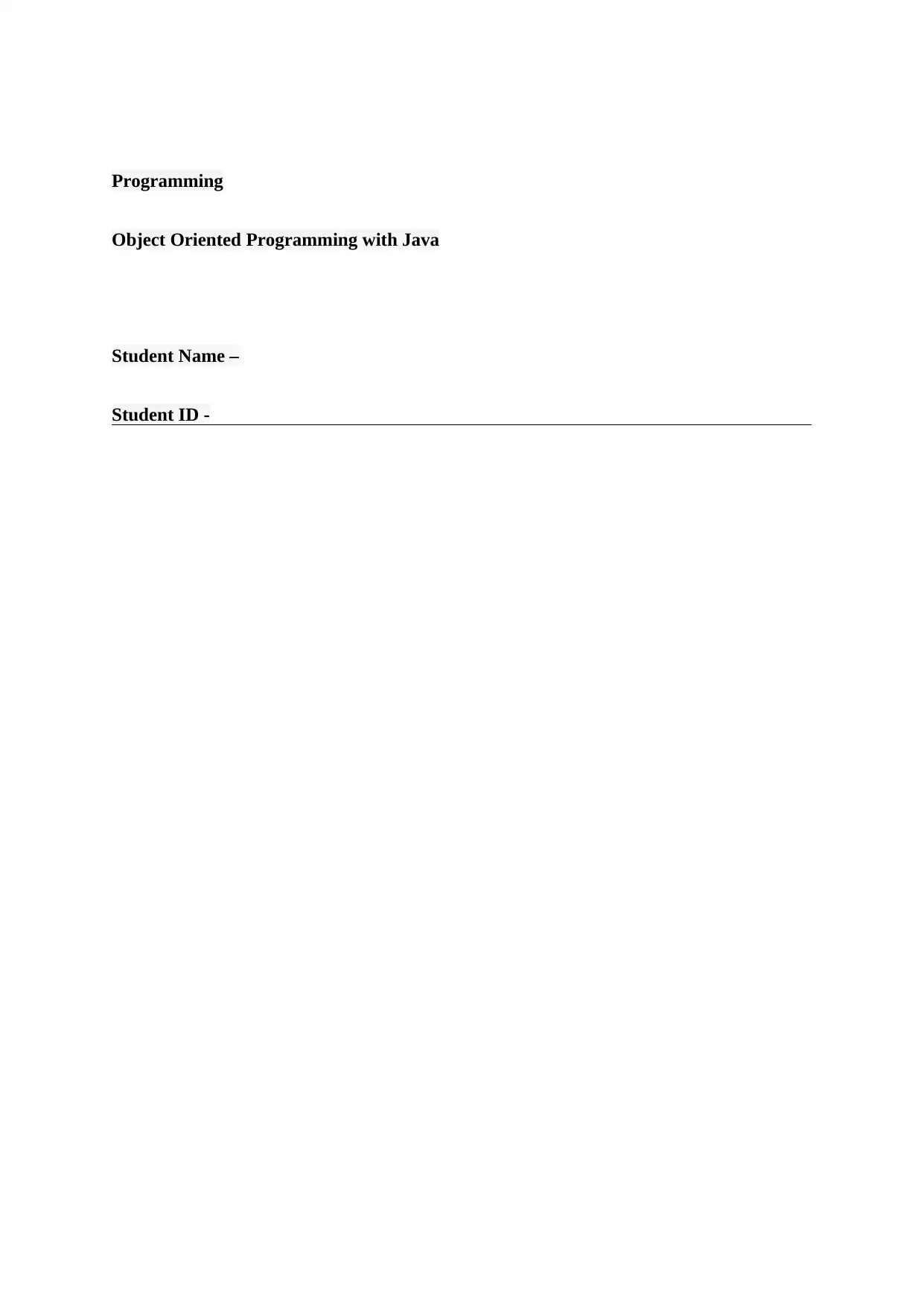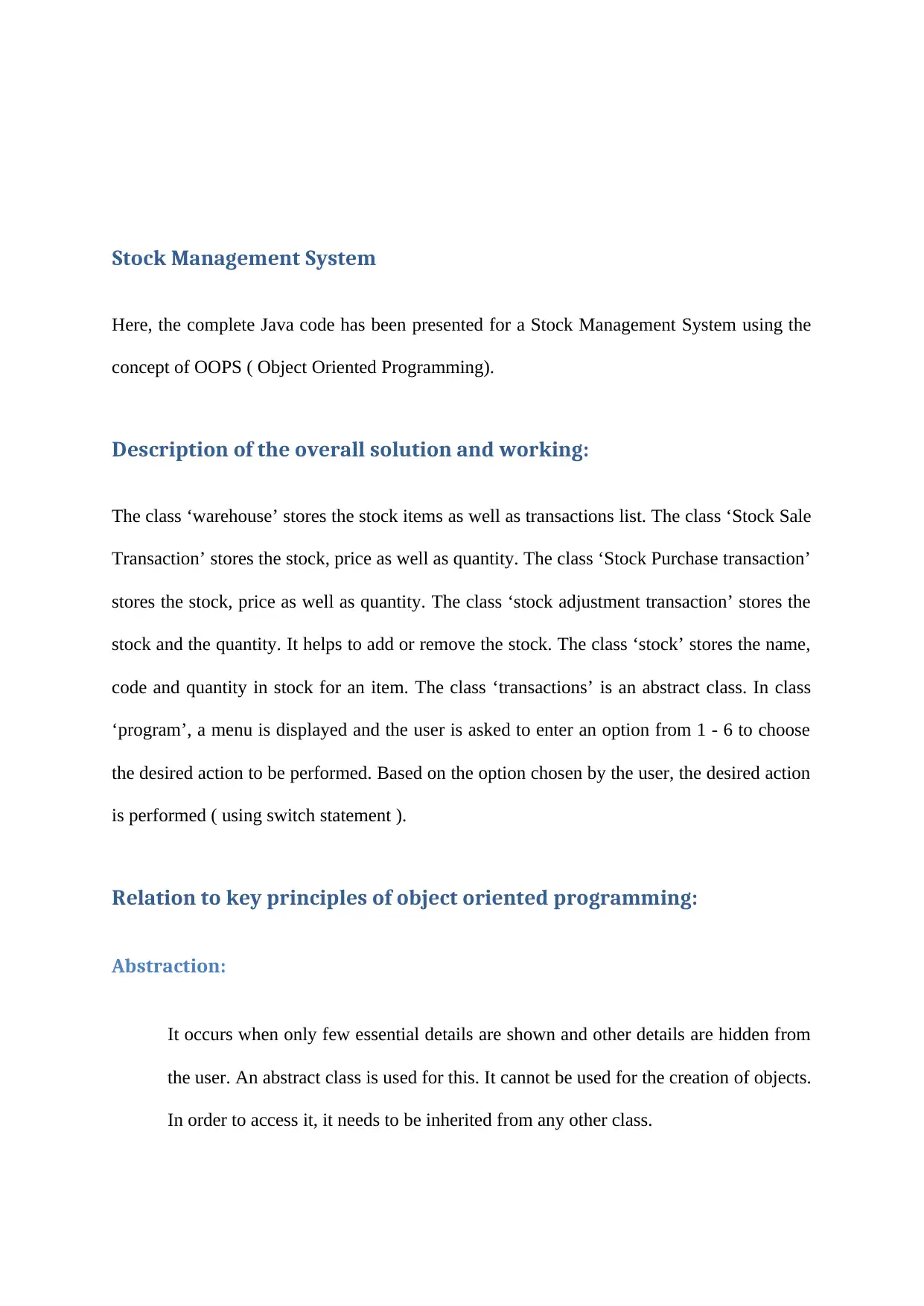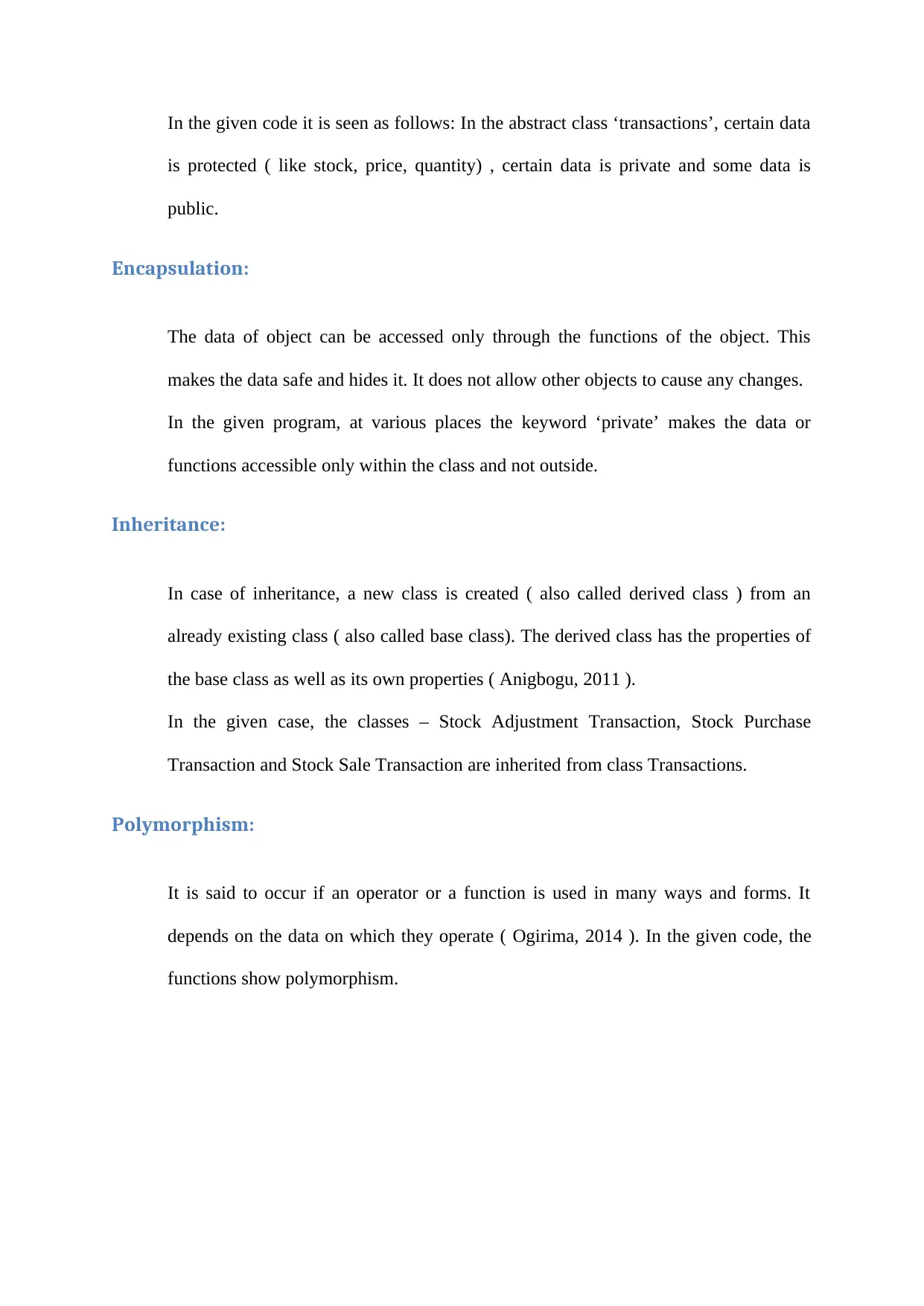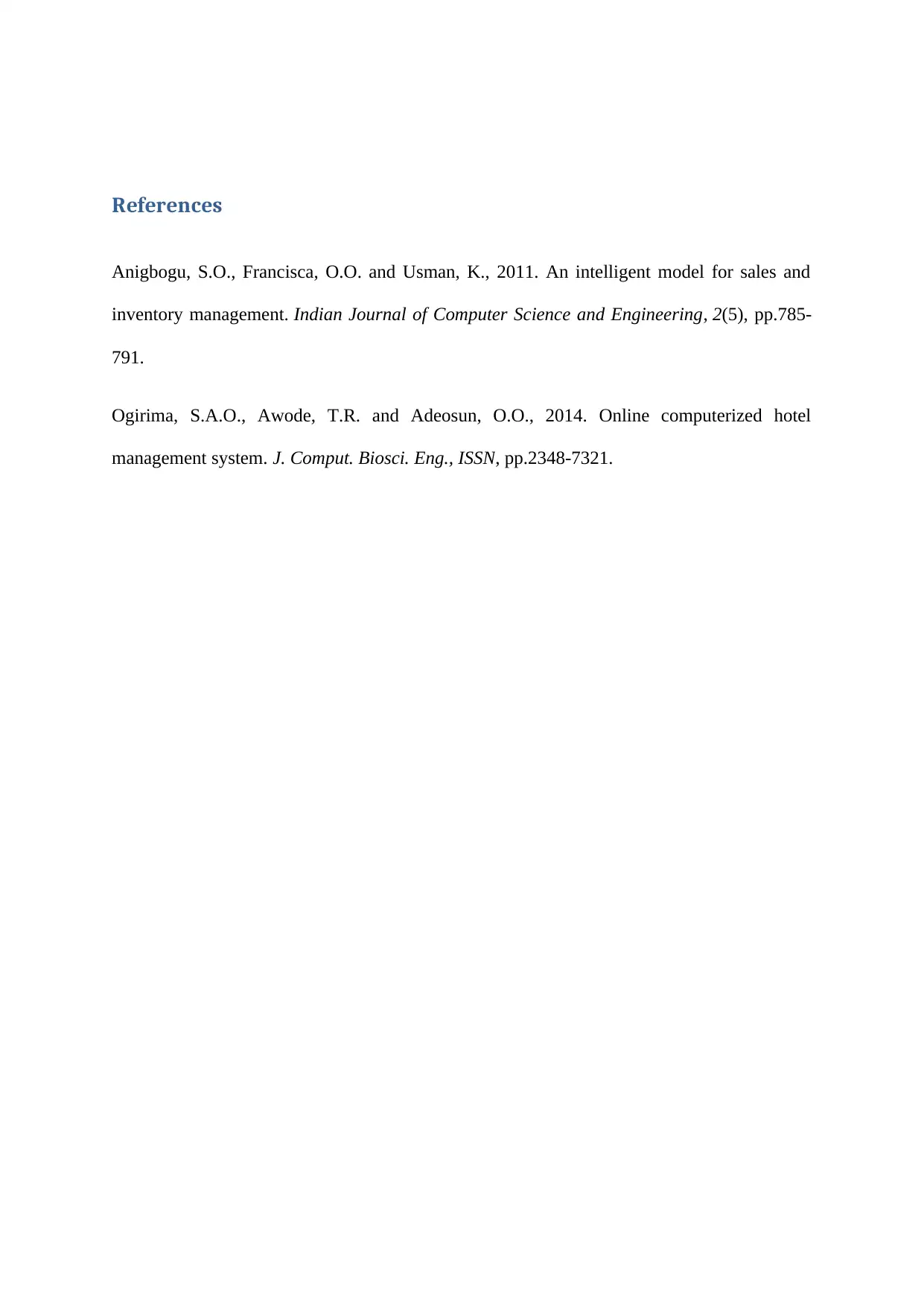SIT771 Object Oriented Development: Stock Management System Java Code
VerifiedAdded on 2022/10/08
|4
|570
|40
Practical Assignment
AI Summary
This document provides a comprehensive Java code solution for a Stock Management System, designed using Object-Oriented Programming (OOPS) principles. The system includes classes for warehouse management, stock transactions (sales, purchases, adjustments), and individual stock items. The program features a menu-driven interface allowing users to perform various actions. The solution effectively demonstrates core OOPS concepts: abstraction (through abstract classes), encapsulation (using private and protected data), inheritance (in transaction classes), and polymorphism. The document outlines the overall solution structure, the functionality of each class, and how it relates to these key OOPS principles. References to relevant literature are also included. This assignment, part of SIT771, offers a detailed explanation of the code and its design, which aligns with the assignment brief requiring a technical explanation and discussion of the code's functionality and OOPS principles.
1 out of 4








![[object Object]](/_next/static/media/star-bottom.7253800d.svg)